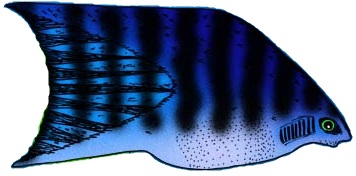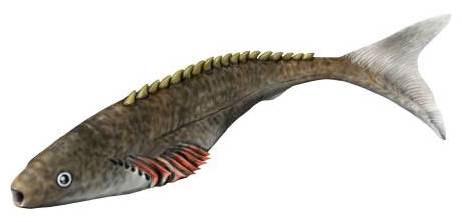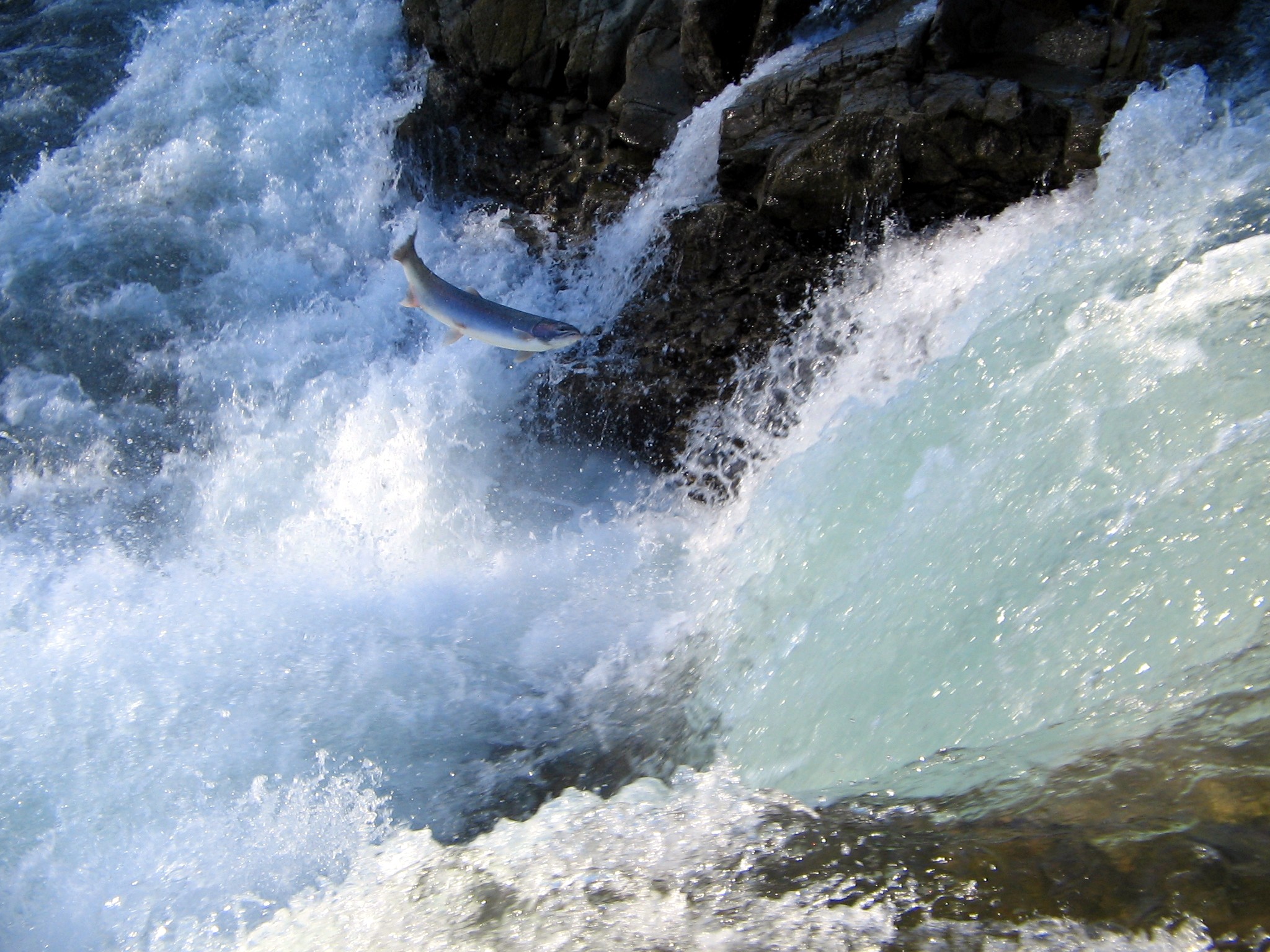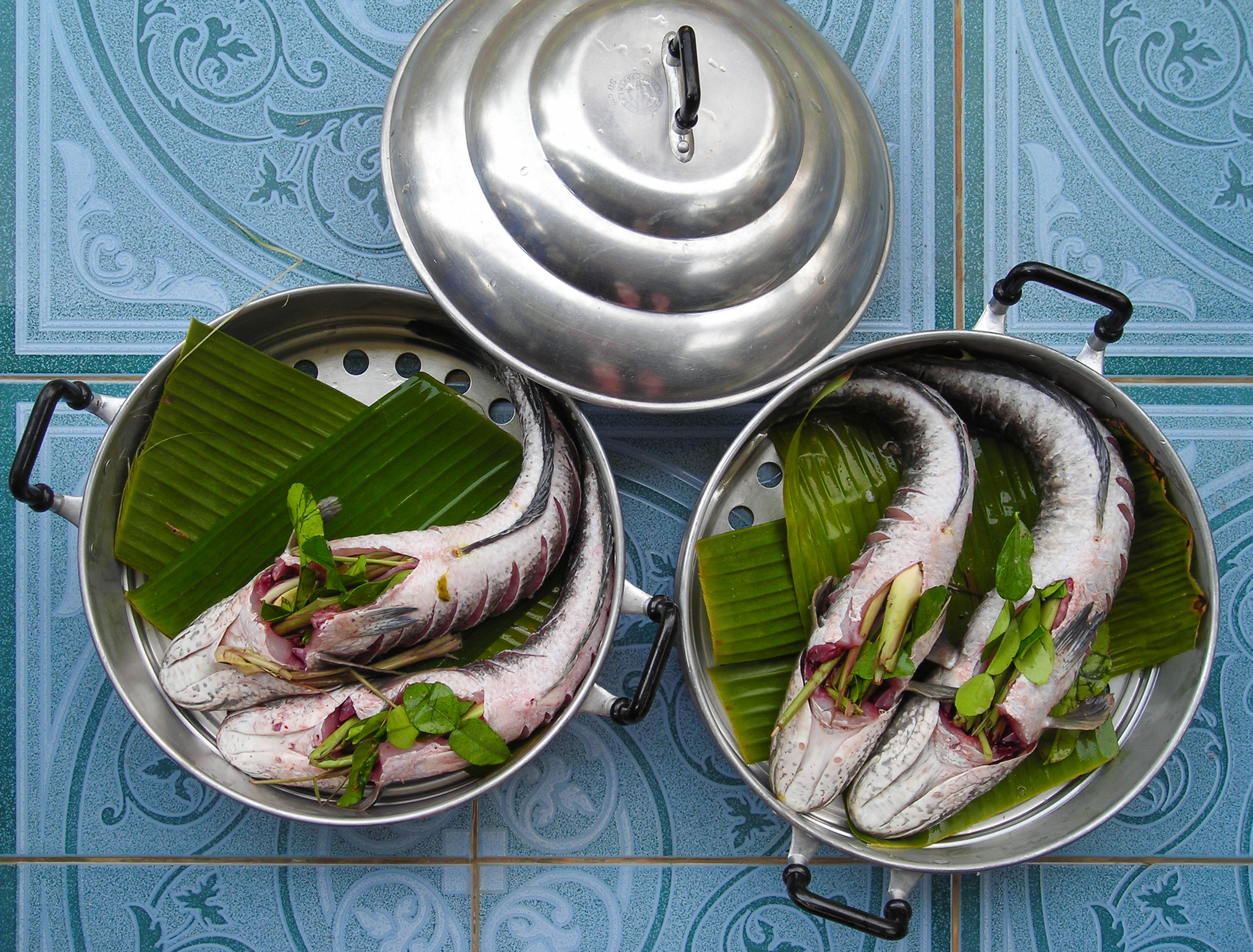|
Salangichthys Microdon
''Salangichthys microdon'' is a species of icefish found in Japan, Korea and the Russian Far East. With the recent removal of '' S. ishikawae'' to the genus ''Neosalangichthys'' this species is the only remaining member of the genus ''Salangichthys''. This species grows to a total length of . Despite its small size, it is considered a food fish and caught in commercial fisheries.Senta, T., I. Kinoshita, and T. Kitamura (1986). Larval Ishikawa Icefish, Salangichthys ishikawae from Surf Zones of Central Honshu, Japan. Bull. Fac. Fish. Nagasaki Univ. 59: 29–35.Saruwatari, T., and M. Okiyama (1992). Life History of Shirauo Salangichthys microdon; Salangidae in a Brackish Lake, Lake Hinuma, Japan. Nippon Suisan Gakkaishi 58(2): 235-248. ''Salangichthys microdon'' may show both migratory (anadromous; adults in salt water but moving to fresh water to breed) and non-migratory (always in brackish or fresh water) life histories, with both types periodically occurring together. As fo ... [...More Info...] [...Related Items...] OR: [Wikipedia] [Google] [Baidu] |
Pieter Bleeker
Pieter Bleeker (10 July 1819 – 24 January 1878) was a Dutch medical doctor, Ichthyology, ichthyologist, and Herpetology, herpetologist. He was famous for the ''Atlas Ichthyologique des Indes Orientales Néêrlandaises'', his monumental work on the fishes of East Asia published between 1862 and 1877. Life and work Bleeker was born on 10 July 1819 in Zaandam. He was employed as a medical officer in the Royal Netherlands East Indies Army from 1842 to 1860, (in French). stationed in the Dutch East Indies (now Indonesia). During that time, he did most of his ichthyology work, besides his duties in the army. He acquired many of his specimens from local fishermen, but he also built up an extended network of contacts who would send him specimens from various government outposts throughout the islands. During his time in Indonesia, he collected well over 12,000 specimens, many of which currently reside at the Naturalis Biodiversity Center in Leiden. Bleeker corresponded with Auguste Dum� ... [...More Info...] [...Related Items...] OR: [Wikipedia] [Google] [Baidu] |
Commercial Fishing
Commercial fishing is the activity of catching fish and other seafood for Commerce, commercial Profit (economics), profit, mostly from wild fisheries. It provides a large quantity of food to many countries around the world, but those who practice it as an industry must often pursue fish far into the ocean under adverse conditions. Large-scale commercial fishing is called industrial fishing. The major fishing industries are not only owned by major corporations but by small families as well. In order to adapt to declining fish populations and increased demand, many commercial fishing operations have reduced the sustainability of their harvest by fishing further down the food chain. This raises concern for Fisheries management, fishery managers and researchers, who highlight how further they say that for those reasons, the sustainability of the marine ecosystems could be in danger of collapsing. Commercial fishermen harvest a wide variety of animals. However, a very small number of ... [...More Info...] [...Related Items...] OR: [Wikipedia] [Google] [Baidu] |
Fish Of East Asia
A fish (: fish or fishes) is an aquatic, anamniotic, gill-bearing vertebrate animal with swimming fins and a hard skull, but lacking limbs with digits. Fish can be grouped into the more basal jawless fish and the more common jawed fish, the latter including all living cartilaginous and bony fish, as well as the extinct placoderms and acanthodians. In a break to the long tradition of grouping all fish into a single class (Pisces), modern phylogenetics views fish as a paraphyletic group. Most fish are cold-blooded, their body temperature varying with the surrounding water, though some large active swimmers like white shark and tuna can hold a higher core temperature. Many fish can communicate acoustically with each other, such as during courtship displays. The study of fish is known as ichthyology. The earliest fish appeared during the Cambrian as small filter feeders; they continued to evolve through the Paleozoic, diversifying into many forms. The earliest fish wi ... [...More Info...] [...Related Items...] OR: [Wikipedia] [Google] [Baidu] |
Fish Of Russia
A fish (: fish or fishes) is an aquatic, anamniotic, gill-bearing vertebrate animal with swimming fins and a hard skull, but lacking limbs with digits. Fish can be grouped into the more basal jawless fish and the more common jawed fish, the latter including all living cartilaginous and bony fish, as well as the extinct placoderms and acanthodians. In a break to the long tradition of grouping all fish into a single class (Pisces), modern phylogenetics views fish as a paraphyletic group. Most fish are cold-blooded, their body temperature varying with the surrounding water, though some large active swimmers like white shark and tuna can hold a higher core temperature. Many fish can communicate acoustically with each other, such as during courtship displays. The study of fish is known as ichthyology. The earliest fish appeared during the Cambrian as small filter feeders; they continued to evolve through the Paleozoic, diversifying into many forms. The earliest fish w ... [...More Info...] [...Related Items...] OR: [Wikipedia] [Google] [Baidu] |
Fish Of Korea
A fish (: fish or fishes) is an aquatic, anamniotic, gill-bearing vertebrate animal with swimming fins and a hard skull, but lacking limbs with digits. Fish can be grouped into the more basal jawless fish and the more common jawed fish, the latter including all living cartilaginous and bony fish, as well as the extinct placoderms and acanthodians. In a break to the long tradition of grouping all fish into a single class (Pisces), modern phylogenetics views fish as a paraphyletic group. Most fish are cold-blooded, their body temperature varying with the surrounding water, though some large active swimmers like white shark and tuna can hold a higher core temperature. Many fish can communicate acoustically with each other, such as during courtship displays. The study of fish is known as ichthyology. The earliest fish appeared during the Cambrian as small filter feeders; they continued to evolve through the Paleozoic, diversifying into many forms. The earliest fish wi ... [...More Info...] [...Related Items...] OR: [Wikipedia] [Google] [Baidu] |
Fish Of Japan
A fish (: fish or fishes) is an aquatic, anamniotic, gill-bearing vertebrate animal with swimming fins and a hard skull, but lacking limbs with digits. Fish can be grouped into the more basal jawless fish and the more common jawed fish, the latter including all living cartilaginous and bony fish, as well as the extinct placoderms and acanthodians. In a break to the long tradition of grouping all fish into a single class (Pisces), modern phylogenetics views fish as a paraphyletic group. Most fish are cold-blooded, their body temperature varying with the surrounding water, though some large active swimmers like white shark and tuna can hold a higher core temperature. Many fish can communicate acoustically with each other, such as during courtship displays. The study of fish is known as ichthyology. The earliest fish appeared during the Cambrian as small filter feeders; they continued to evolve through the Paleozoic, diversifying into many forms. The earliest fish w ... [...More Info...] [...Related Items...] OR: [Wikipedia] [Google] [Baidu] |
Sushi
is a traditional Japanese dish made with , typically seasoned with sugar and salt, and combined with a variety of , such as seafood, vegetables, or meat: raw seafood is the most common, although some may be cooked. While sushi comes in numerous styles and presentation, the current defining component is the vinegared rice, also known as , or . The modern form of sushi is believed to have been created by Hanaya Yohei, who invented nigiri-zushi, the most commonly recognized type today, in which seafood is placed on hand-pressed vinegared rice. This innovation occurred around 1824 in the Edo period (1603–1867). It was the fast food of the ''chōnin'' class in the Edo period. Sushi is traditionally made with medium-grain white rice, although it can also be prepared with brown rice or short-grain rice. It is commonly prepared with seafood, such as Squid as food, squid, Eel as food, eel, Japanese amberjack, yellowtail, Salmon as food, salmon, Tuna as food, tuna or Crab stick, ... [...More Info...] [...Related Items...] OR: [Wikipedia] [Google] [Baidu] |
Sashimi
is a Japanese cuisine, Japanese delicacy consisting of fresh raw fish or Raw meat, meat sliced into thin pieces and often eaten with soy sauce. Origin The word ''sashimi'' means 'pierced body', i.e., "wikt:刺身, 刺身" = ''sashimi'', where wikt:刺, 刺 wikt:し, し = ''sashi'' (pierced, stuck) and wikt:身, 身 = ''mi'' (body, meat). This word dates from the Muromachi period (1336-1573) and there are multiple theories as to its etymology: The term was possibly coined when the word "wikt:切る, 切る" = ''kiru'' (cut), the culinary step, was considered too inauspicious to be used by anyone other than a samurai. This word may derive from the culinary practice of sticking the fish's tail and fin to the slices for the purpose of identifying the fish being eaten. Another possibility for the name is the traditional method of harvesting. "''Sashimi''-grade" fish is caught by individual handline. As soon as the fish is landed, its brain is pierced with a sharp spike, and it ... [...More Info...] [...Related Items...] OR: [Wikipedia] [Google] [Baidu] |
Brackish
Brackish water, sometimes termed brack water, is water occurring in a natural environment that has more salinity than freshwater, but not as much as seawater. It may result from mixing seawater (salt water) and fresh water together, as in estuaries, or it may occur in brackish fossil aquifers. The word comes from the Middle Dutch root '' brak''. Certain human activities can produce brackish water, in particular civil engineering projects such as dikes and the flooding of coastal marshland to produce brackish water pools for freshwater prawn farming. Brackish water is also the primary waste product of the salinity gradient power process. Because brackish water is hostile to the growth of most terrestrial plant species, without appropriate management it can be damaging to the environment (see article on shrimp farms). Technically, brackish water contains between 0.5 and 30 grams of salt per litre—more often expressed as 0.5 to 30 parts per thousand (‰), which is a spec ... [...More Info...] [...Related Items...] OR: [Wikipedia] [Google] [Baidu] |
Anadromous
Fish migration is mass relocation by fish from one area or body of water to another. Many types of fish migrate on a regular basis, on time scales ranging from daily to annually or longer, and over distances ranging from a few metres to thousands of kilometres. Such migrations are usually done for better feeding or to reproduce, but in other cases the reasons are unclear. Fish migrations involve movements of schools of fish on a scale and duration larger than those arising during normal daily activities. Some particular types of migration are ''anadromous'', in which adult fish live in the sea and migrate into fresh water to spawn; and ''catadromous'', in which adult fish live in fresh water and migrate into salt water to spawn. Marine forage fish often make large migrations between their spawning, feeding and nursery grounds. Their movements are associated with ocean currents and with the availability of food in different areas at different times of the year. The migratory ... [...More Info...] [...Related Items...] OR: [Wikipedia] [Google] [Baidu] |
Food Fish
Many species of fish are caught by humans and consumed as food in virtually all regions around the world. Their meat has been an important dietary source of protein and other nutrients in the human diet. The English language does not have a special culinary name for food prepared from fish like with other animals (as with '' pig'' vs. ''pork''), or as in other languages (such as Spanish '' pez'' vs. '' pescado''). In culinary and fishery contexts, ''fish'' may include so-called shellfish such as molluscs, crustaceans, and echinoderms; but, more expansively, ''seafood'' covers both fish and other marine life used as food. Since 1961, the average annual increase in global apparent food fish consumption (3.2 percent) has outpaced population growth (1.6 percent) and exceeded the increase in consumption of meat from all terrestrial animals except poultry (4.9 percent), both combined (2.8 percent) and individually (bovine, ovine, porcine, et cetera). In ''per capita'' terms, food f ... [...More Info...] [...Related Items...] OR: [Wikipedia] [Google] [Baidu] |
Species
A species () is often defined as the largest group of organisms in which any two individuals of the appropriate sexes or mating types can produce fertile offspring, typically by sexual reproduction. It is the basic unit of Taxonomy (biology), classification and a taxonomic rank of an organism, as well as a unit of biodiversity. Other ways of defining species include their karyotype, DNA sequence, morphology (biology), morphology, behaviour, or ecological niche. In addition, palaeontologists use the concept of the chronospecies since fossil reproduction cannot be examined. The most recent rigorous estimate for the total number of species of eukaryotes is between 8 and 8.7 million. About 14% of these had been described by 2011. All species (except viruses) are given a binomial nomenclature, two-part name, a "binomen". The first part of a binomen is the name of a genus to which the species belongs. The second part is called the specific name (zoology), specific name or the specific ... [...More Info...] [...Related Items...] OR: [Wikipedia] [Google] [Baidu] |









